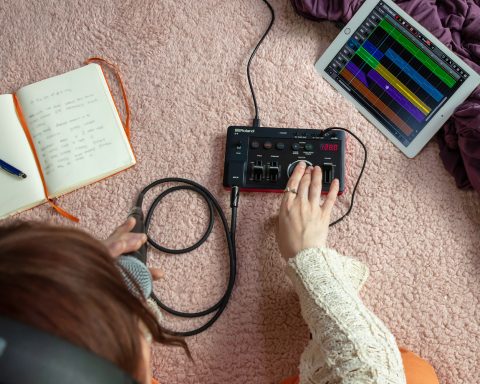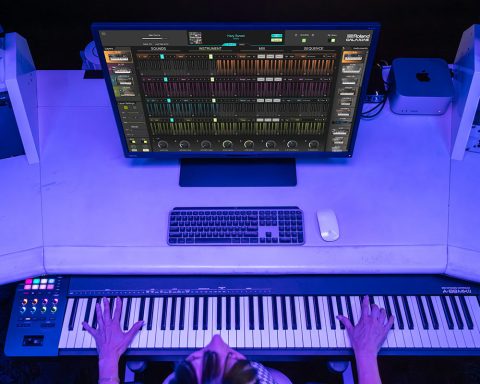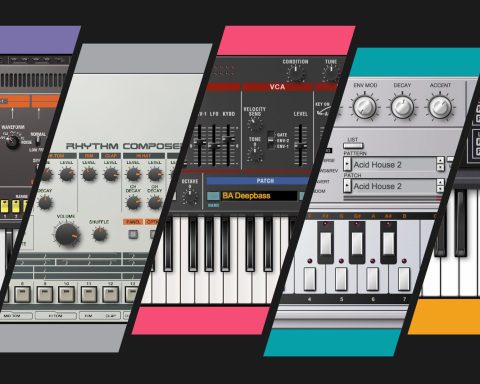Understanding Frequency Modulation (FM) synthesis is often considered a mystical art. Many even see it as the domain of magicians and mathematicians. It’s easy to understand why. FM synthesis first appeared in analog form on some early Buchla modules and synthesizers (including the famous Music Easel). Still, achieving consistent results was tricky. This changed with John Chowing who discovered that harmonic tuning was the key to making Frequency Modulation sing.
In this Audio Engineering Society video, Chowning explains exactly how he discovered these properties of FM synthesis. The clip also explores the tuning interactions of two connected oscillators. It’s four minutes and—thanks to Chowning’s elegant explanation—easy to understand.
From Programmers to the Mainstream
The earliest digital FM synthesizers were computer-based. They required actual programming skills to operate. Toward the end of the 1970s, the legendary Synclavier made it slightly more accessible. However, only if you had a few hundred thousand dollars to spare.
By the ’80s, with the DX-7, this synthesis technology reached the price range of mainstream musicians. Even so, programming original sounds into the instrument was a laborious process. As a consequence, the instrument almost single-handedly created the third-party preset industry.
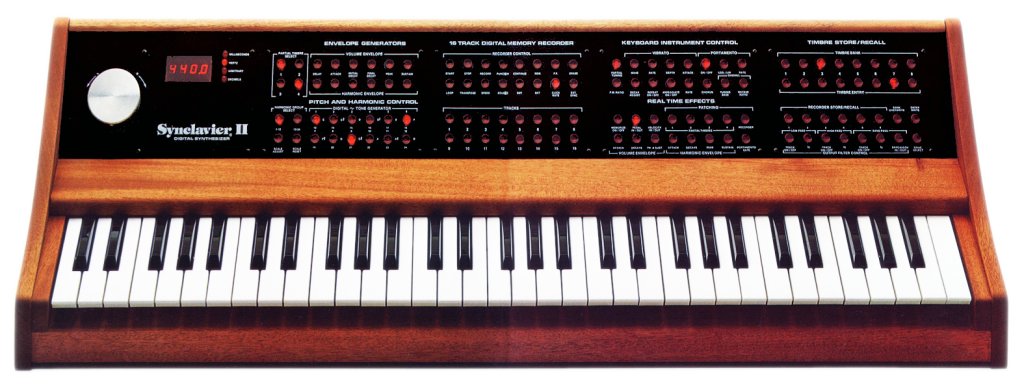
Tools and Speeds Improve
Processing speeds soon reached escape velocity. Due to this, FM became the domain of softsynths like Ableton’s popular Operator. Thanks to Robert Henke’s deep understanding of FM, he simplified the design tools. With this user-accessibility, Skrillex used Operator to create his signature Dubstep “wub bass.” He did so by manipulating complicated stacks of FM oscillators, also known as algorithms.
How Sound Works
With all that information in place, let’s look at how sound itself functions. To begin, every waveform includes seven attributes. These are: amplitude (loudness), velocity (the speed of sound), phase, wavelength, harmonic content, envelope, and frequency.
"At its core, FM synthesis is basically vibrato, but at very fast audio rates. Tuning this audio-range vibrato to the pitches of the harmonic series creates entirely new musical timbres."
The frequency of any waveform determines its pitch. If we swap “pitch” for “frequency,” FM synthesis is actually pitch modulation. Musicians and producers use pitch modulation via LFOs all the time. However, in those cases, it’s called “vibrato.”
At its core, FM synthesis is basically vibrato, but at very fast audio rates. John Chowning’s crowning discovery was realizing that tuning this audio-range vibrato to the harmonic series pitches creates new timbres.
ZEN-Core and Analog Circuit Behavior
Many musicians and producers think of Roland as the leader in virtual analog synths. However, thanks to ZEN-Core and ACB (Analog Circuit Behavior), there’s FM under the hood of several current products. The new firmware update to the TR-8S is the latest example. Even so, the SYSTEM-8 has had robust FM tools since its introduction. These were later expanded in the 1.20 firmware update
Now we’ve covered the essentials. Let’s explore how two of Roland’s current products implement Frequency Modulation.
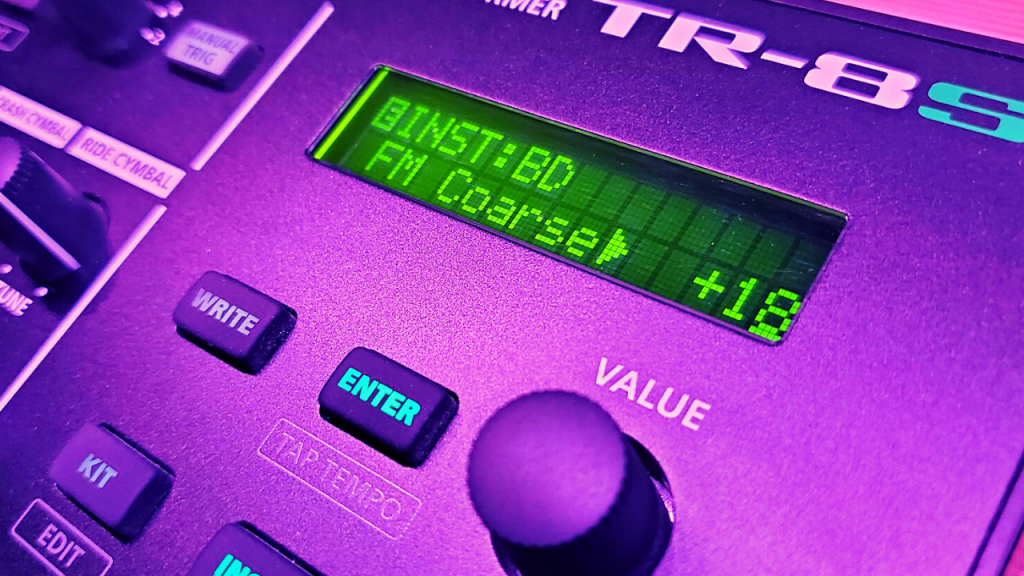
TR-8S Firmware 2.0
The most recent splash is the TR-8S 2.0 update and the introduction of the TR-6S. In my last Roland Articles feature, I delved into kit design using samples and processing. Much of that information still applies here. Now, I’ll focus on some of the new FM tricks you can do after updating the firmware.
FM in TR-8S 2.0 is transparent, making it easy for newcomers to work with these tools. This is the case regardless of previous experience. For instance, explore the new percussion and synth sounds sprinkled throughout the unit. You’ll see an additional “F” label at the top of each sound type. This is in addition to the previous set of Preset (P), Sample (S), Loop (L), and User (U) labels.
New Parameters
Whenever you see that F, you’ll have access to the new FM parameters, along with the other editing parameters. You will also see several new 2.0 effects, like Ring Mod and Frequency Shifting.
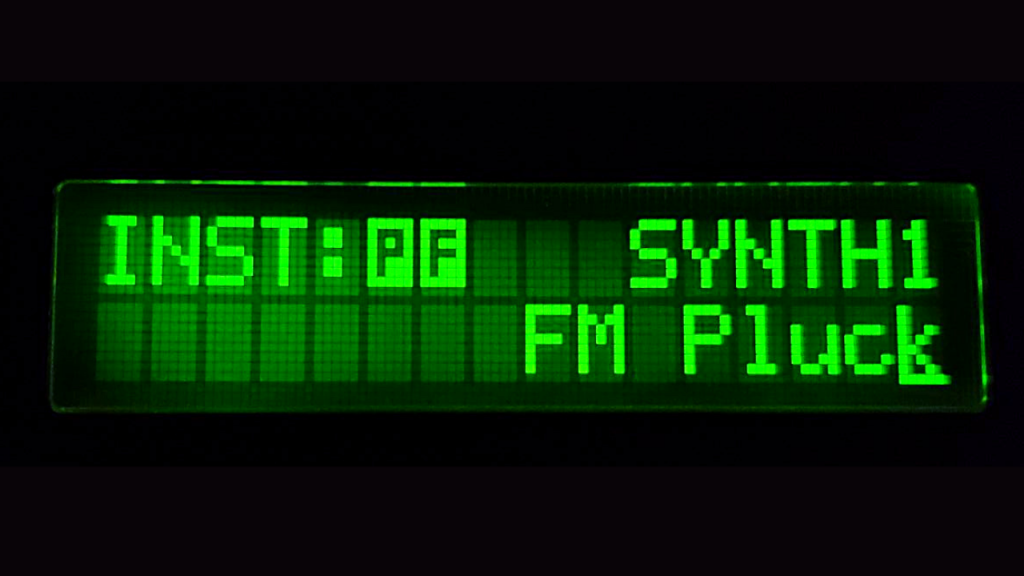
Not all these new FM instrument sounds include the term “FM” in their titles. As a result, this F label is the clearest way to determine the tone generation source for the instrument.
Meet Morph
From there, you have an FM-specific parameter called Morph. In some cases, there will also be FM Coarse. As with samples, Coarse lets you tune the sounds so the 12 o’clock position of each instrument’s front panel Tune knob aligns with it.
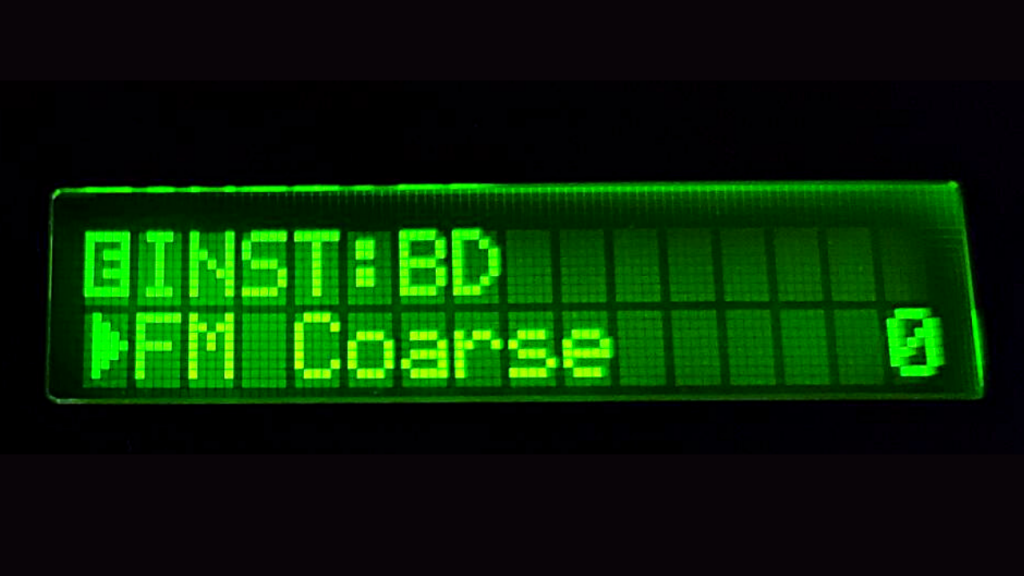
Morph is a bit more complex. This parameter controls multiple FM parameters from a single knob. Morph acts much like a “macro” knob on a synth or DAW.
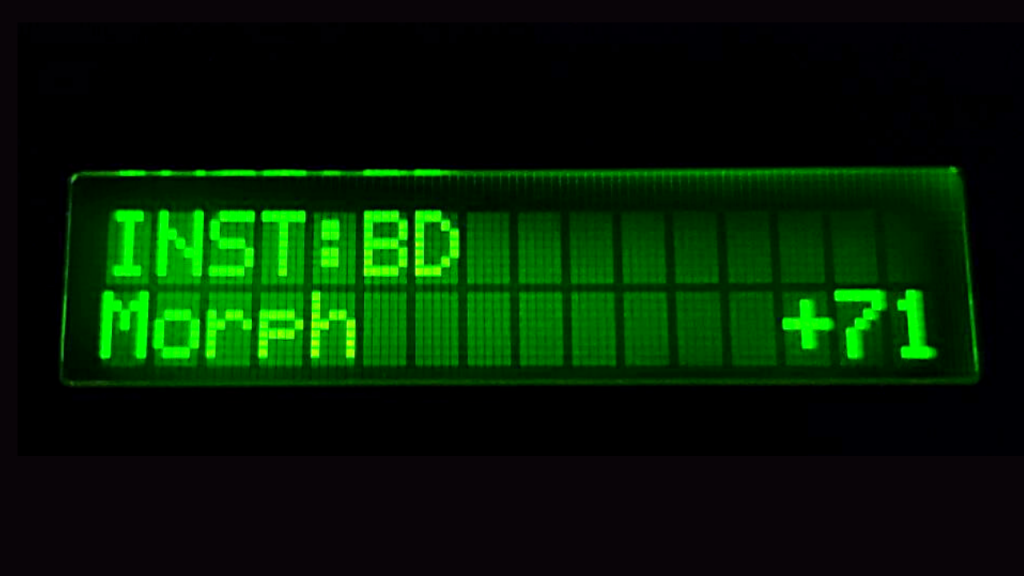
A Few Examples
It’s beyond the scope of this article to explain the precise Morph behavior for every new TR-8S drum/instrument. This is especially the case since there are so many. Below are a few examples of drums and synth hits I’ve reverse-engineered. I’ve also added short summaries of their Morph behaviors.
Snare Drum (SD)
- Piccolo: FM Modulator tuning and depth, while noise volume stays consistent
- Simple Snare: FM modulator depth, which increases odd harmonics here. Note that negative values reduce the level of noise
- Metalsheet: FM modulator tuning, depth, and envelope (both negative and positive)
Bass Drum (BD)
- FM Taste: Multiple attributes focusing on FM depth and modulator tuning
- Simple Kick: FM envelope depth
- Knocker: FM Modulator tuning, with scaled depth
Other Synth Instruments
- SYNTH 1 – FM Pluck: FM Depth, with odd harmonics
- SYNTH 1 – FM Dual Pluck: FM Depth, with odd harmonics
- SCALED – FM Mallet Perc: FM modulator tuning and depth
- BASS – FM Bass: FM depth and FM attack time
- BASS – Bass Swoop Maj: Adjusts modulator tuning and envelope (try +100 for a “perfect” result)
- CHORD – FM Synth Chord: Multiple parameters including FM depth (try negative too)
Again, these are very broad guidelines determined by listening to the behavior of the Morph parameter. Seeing that there are so many new sounds, I may have omitted a few subtle aspects.
Still, the bottom line is the behavior of the Morph knob is unique to every drum, synth, or hit. Roland did its homework on these macros. Consequently, it’s a breeze to add your own originality. Furthermore, you can even modulate the behavior via motion sequencing.

FM and the Roland SYSTEM-8
Many consider the SYSTEM-8 an affordable way to collect the sounds of the JUPITER-8, JUNO-106, and many of Roland Cloud’s Legendary softsynths. Indeed, it put them all at your fingertips in a roadworthy hardware synth. Since its introduction, the instrument has become one of my primary studio synths. In fact, the SYSTEM-8 lets me mix and match oscillator types, vintage Roland filters, and capable sequencing tools.
Its note-perfect ACB models are the most common use for this wündersynth. Still, people often forget that the primary AIRA engine is its own powerhouse. The SYSTEM-8 is capable of everything from thick EDM stabs to exotic side-band and comb filter effects from the iconic V-Synth series.
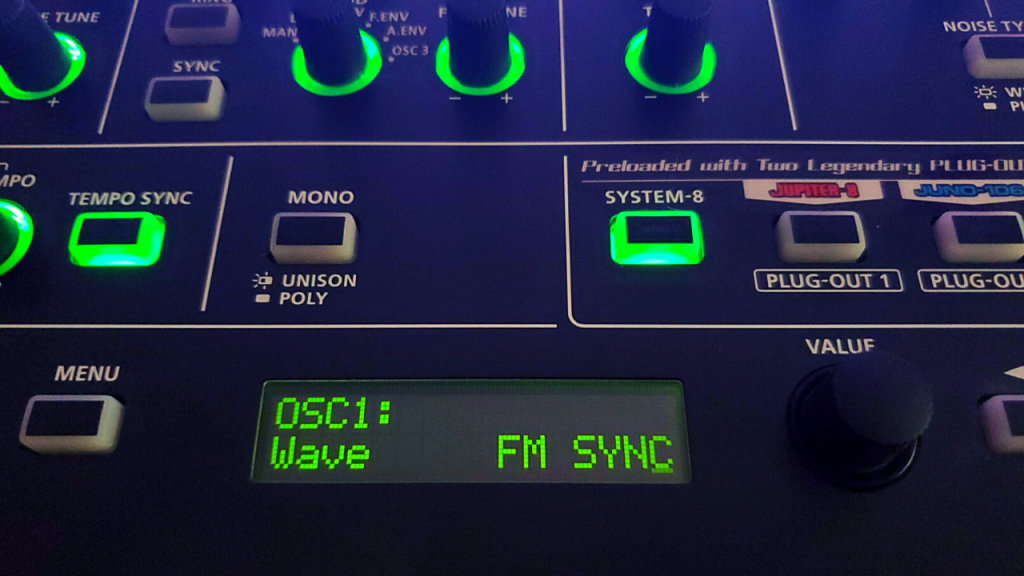
AIRA Exploration
Explore the AIRA side of the SYSTEM-8 and you’ll find a massive set of FM synthesis amenities. These come courtesy of its individually selectable oscillator modes. While the firmware that shipped with the first units included a few experimental FM options in oscillator Variation 2, 2018’s firmware v 1.20 introduced oscillator Variations 3 and 4.
These added professional FM synthesis tools for each oscillator. Best of all, they’re independently assignable. As a result, Osc 1 can use analog or unison waves, while Osc 2 focuses on vintage or modern FM effects. Additionally, you still have Osc 3 available for adding beefy sub-bass. From there, you can process all three oscillators using a JUPITER-8, JUNO-106, or V-Synth filter. This flexibility makes the SYSTEM-8 a go-to synth for many artists.
Oscillator Variation 3
Variation 3 is where the vintage FM sounds live and consists of a simple Carrier:Modulator pair. You can see the configuration in the diagram below.

If you’re a fan of synthwave, vaporwave, or old school ‘80s ballads, this is the oscillator mode you’ll want to explore. Here’s a quick overview of the six FM types available.
ProTip: Color parameter controls FM depth in all these modes. Therefore, you can apply any of the three envelopes, the LFO, or Osc 3 for more audio-rate madness.
Mode 1 (1:1 ratio) This creates a simple pair tuned to the same harmonic. It’s great for classic FM basses. This is especially the case when using a fast decay P. Env to modulate Color.
Mode 2 (1:1.5 ratio) Applying this tunes the modulator 1.5 octaves above the carrier, creating a bell-like tone, with the sub-harmonic emphasized for added bass.
Mode 3 (1:2 ratio) House fans take note. Select this mode and use the pitch envelope described in Mode 1. This allows you to recreate the popular “knocking bass” sound from classic tech and house tracks.
Mode 4 (1:3.5 ratio) When combined with a Color envelope with a long decay and release, this ratio creates the famous FM Tubular Bell preset. Most people will be familiar with it as the “Taco Bell” commercial bell sound.
Mode 5 (1:15 ratio) Are you after those glistening electric pianos from ’80s gems from Phil Collins and Whitney Houston? this is the mode that adds the “tine” sound.
Mode 6 (6:1 ratio) Things get a bit trickier here. This is due to the fact that the carrier is set to the 6th harmonic and the modulator is tuned to the first harmonic. The result is useful for creating guitar-like and clavinet textures.
Oscillator Variation 4
Variation 4 contains sophisticated combinations of FM operators. These are arranged in a complex algorithm shown in the image below.

This is the oscillator mode that fans of dubstep and EDM will want to explore.
The table below shows the tunings and waveforms for each operator governed by the Color knob. As you can see, the details of these configurations are complex. Fortunately, with an LFO, the modes speak for themselves

ProTip: Use the SYSTEM-8 tempo-synced LFO—with a sine or triangle wave—to modulate the oscillator Color parameter when experimenting with Variation 4 types. You’ll hear that it’s optimized for those historic “wub” bass effects and scorching EDM leads.
If you have either of the above Roland products, you’ve got a gateway into the universe of FM synthesis. Access these tools without algorithms, tunings, and waveform selection for multiple operators. With the TR-8S you can dive right in and start tweaking. In the SYSTEM-8, you’ve got a synth that can mix-and-match the history of synthesis in a glowing green case.
Ultimately, while FM synthesis is complex, Roland makes it feel easy.


